Welcome to Vision Corner!
Houston's Preferred Private Local Practice
Welcome to Houston’s premier private eye care practice, where exceptional vision meets personalized service. Located in the heart of the uptown area near River Oaks District and the Galleria, Vision Corner has earned the trust of over 1,000 satisfied patients through our comprehensive approach to eye health. Our modern facility blends cutting-edge optometric technology with a warm, welcoming atmosphere that makes every visit comfortable and stress-free.
As specialists in Neurolens, Migraine Vision Expertise, and Meta Glasses, we provide advanced solutions designed to address the root causes of visual discomfort, headaches, and digital eye strain.
Whether you need a routine eye exam, specialized treatment, or the perfect pair of designer frames, our Doctors and our experienced team are dedicated to helping you see your best—while looking your absolute finest.
Over 1000 5-star reviews!
Vision Corner Delivers Unmatched Eye Care
Experience the difference that personalized, unhurried eye care can make for your vision and overall well-being. Our comprehensive approach ensures you receive the thorough attention your eyes deserve, from advanced diagnostic testing to expert treatment recommendations. Dr. Sophia W. Barnes and our dedicated team are ready to help you achieve optimal eye health while finding the perfect eyewear to complement your lifestyle and professional image.
Ready to discover what exceptional eye care feels like? Contact our Vision Corner team today at 713-623-2000 to schedule your comprehensive eye examination. Visit us at 4725 Westheimer Rd, Houston, TX 77027, and follow us on Facebook and Instagram for the latest updates on eye health tips and designer frame collections.

Why Choose Us
Vision Corner’s commitment to excellence sets us apart in Houston’s competitive eye care landscape, making us the preferred choice for discerning patients who value quality and personalized attention.
Our Story
At Vision Corner, our mission centers on providing exceptional eye care that goes beyond the standard industry approach. We believe your vision deserves more than a rushed appointment, which is why we schedule comprehensive eye exams with double the time typically allocated by other practices. Our team combines state-of-the-art optometric technology with an integrative, holistic approach to eye health, ensuring every aspect of your vision and eye wellness receives the attention it deserves.
We’re committed to creating a comfortable environment where patient education takes priority, helping you understand your eye health, insurance coverage, and treatment options so you can make informed decisions about your vision care.
Vision Corner is a comprehensive eye care office in Houston, Texas.
FAQs
Do you accept appointments?
Yes, we do accept appointments at our office. In fact, we highly recommend that you schedule an appointment with us in advance to ensure that you receive the best possible care.
How often should I visit the optometrist?
Typically, it’s recommended to visit the optometrist for a comprehensive eye exam every 1 to 2 years, depending on your age, overall eye health, and any existing vision issues. If you have specific concerns or changes in your vision, it’s best to schedule an appointment regardless of the recommended timeframe. Your optometrist can provide personalized guidance based on your individual needs.
What services do you offer?
Vision Corner is happy to offer a variety of services including:
Is it necessary to schedule an appointment for purchasing new glasses?
Contact us today to connect with our staff on purchasing new frames at our office, especially if you possess a valid and current prescription.
Contact UsHow long is my prescription valid for?
To maintain up-to-date health and wellness assessments, it’s advisable to undergo an annual eye exam.
What types of eye conditions do your Doctors specialize in treating?
Currently, Dr. Barnes is a licensed Therapeutic Optometrist and Optometric Glaucoma Specialist with expertise in multiple areas including migraine vision therapy, computer vision syndrome, and diabetic eye care. She specializes in Neurolens treatments for digital eye strain, myopia management for both children and adults, and comprehensive treatment of eye diseases like glaucoma, macular degeneration, and diabetic retinopathy. Her holistic approach addresses both immediate vision concerns and long-term eye health maintenance.
What makes Vision Corner different from other eye care practices?
Vision Corner stands out by providing double the appointment time compared to industry standards, ensuring thorough, unhurried care for every patient. Our team receives specialized training to work with busy executives and professionals, understanding the unique demands of high-stress lifestyles. We combine advanced diagnostic technology with personalized attention, creating a premium experience that matches our upscale Galleria location.
How long should I expect my appointment to take?
Unlike many practices that rush through eye exams, Vision Corner schedules comprehensive appointments with double the industry-standard time allocation. This typically means your complete visit, including examination, consultation, and frame selection if needed, will take approximately 60-90 minutes depending on your specific needs. This extended timeframe allows our Doctors to conduct thorough testing, discuss your results in detail, and address all your questions without feeling rushed.
What designer eyewear brands do you carry?
Our carefully curated collection features premium designer brands including Gucci, Tom Ford, Cartier, Oliver Peoples, Maui Jim, Roberto Cavalli, Ferragamo, Cutler and Gross, Kirk and Kirk, Kate Spade, Mont Blanc, and Silhouette. We also offer custom options through iGreen Custom for those seeking truly unique eyewear solutions. Our frame specialists help match your lifestyle, face shape, and personal style with the perfect frames from our extensive luxury collection.
Do you accept my insurance plan?
Vision Corner accepts most major insurance providers, including Vision Service Plan, EyeMed, Versant, Aetna Vision One, Medicare, United Healthcare, Cigna, Blue Cross Blue Shield variants, Humana Vision Care, and Superior Vision. Our knowledgeable staff will verify your specific coverage and explain your benefits in detail during your visit. We believe in complete transparency regarding costs and will break down your out-of-pocket expenses before any treatment begins.
Meet the Doctor
Dr. Sophia W. Barnes, owner and lead optometrist at Vision Corner, brings a unique global perspective to Houston’s eye care community. Born on a military base in Fort Sill, Oklahoma, and raised traveling worldwide with her military family, Dr. Barnes developed a deep appreciation for diverse cultures and individual needs. She earned both her undergraduate degree and Doctor of Optometry degree from the University of Houston with honors, establishing strong local roots while maintaining her worldly outlook.
As a licensed Therapeutic Optometrist and Optometric Glaucoma Specialist, Dr. Barnes specializes in migraine vision therapy, Neurolens treatments, digital eye strain, computer vision syndrome, and myopia management. Her compassionate approach to eye care, combined with expertise in diabetic eye exams and specialty contact lenses, makes her a trusted partner in your vision health journey.
Vision Corner Services
Long-Term Vision Protection Through Prompt Eye Emergency Care
When you face an eye emergency, quick action protects your sight for years to come. Dr. Sophia Barnes at Vision Corner understands that eye trauma, infections, and sudden vision changes can threaten your long-term visual health. Our comprehensive approach addresses immediate concerns while safeguarding your future vision.
Eye emergencies range from foreign objects in your eye to chemical exposure and sudden vision loss. Each situation requires specialized care to prevent lasting damage. We provide immediate stabilization, thorough examinations, and targeted treatments that preserve your eyesight.
Advanced Treatment Options for Modern Eye Emergencies
Our emergency protocols adapt to new challenges in eye care. We stay current with the latest treatment methods for digital eye strain complications, contact lens emergencies, and workplace-related injuries. Vision Corner invests in cutting-edge diagnostic equipment to identify problems quickly.
Technology helps us detect issues that traditional methods might miss. Our modern approach includes:
- Digital imaging to assess internal eye damage
- Specialized flushing systems for chemical exposure
- Advanced prescription drops for rapid inflammation control
- Protective coverings designed for specific injury types
- Real-time monitoring equipment for severe cases
Solving Your Most Critical Eye Emergency Challenges
We address the urgent problems that bring you to our office in distress. Whether you’re dealing with severe eye pain, sudden vision changes, or foreign object removal, our team responds immediately. Vision Corner provides the expertise you need when every minute counts.
Our problem-solving approach tackles both obvious and hidden issues. Emergency symptoms often indicate deeper concerns that require professional attention. We examine beyond the surface to identify underlying causes.
Common emergency situations we handle include:
- Scratched corneas from accidents or debris
- Chemical burns requiring immediate irrigation
- Sudden vision loss or dramatic changes
- Severe eye infections with discharge or swelling
- Objects lodged in the eye requiring careful removal
Don’t wait when facing an eye emergency. Contact Vision Corner immediately to protect your vision and receive the specialized care your eyes deserve.
Understanding the Complex Nature of Eye Infection Types and Causes
Eye infections develop when harmful bacteria, viruses, or fungi invade different parts of your eye structure. Your eyelids, corneas, and conjunctiva each face unique infection risks that require specific identification methods. These conditions can progress rapidly without professional intervention.
Bacterial infections often cause thick discharge and severe redness, while viral infections typically create watery symptoms with light sensitivity. Fungal infections, though less common, can cause serious complications if left untreated. We at Vision Corner recognize these differences, helping you determine the urgency of your situation.
How Our Treatment Approach Differs from Generic Eye Care Methods
Most urgent care centers provide basic eye infection treatment, but specialized optometry practices offer comprehensive diagnostic capabilities. We use advanced examination techniques that identify the specific organism causing your infection. This targeted approach leads to faster recovery times and reduced complications.
Vision Corner combines traditional examination methods with modern diagnostic tools for accurate results. Our specialized equipment allows us to distinguish between different infection types immediately, ensuring you receive the most effective treatment from your first visit.
Key differences in our approach include:
- Advanced diagnostic equipment for precise organism identification
- Specialized medication options beyond basic antibiotic drops
- Comprehensive follow-up protocols to prevent recurrence
- Contact lens care education specific to infection prevention
- Same-day evaluation availability for urgent symptoms
Resolving Your Most Challenging Eye Infection Complications
Persistent or recurring infections require more than surface-level treatment. We address underlying factors that contribute to repeated infections, including contact lens hygiene issues, environmental allergies, and immune system considerations. Our problem-solving approach at Vision Corner examines your complete eye health history.
Complex cases often involve multiple contributing factors that standard treatments miss. We investigate dry eye conditions, eyelid problems, and lifestyle factors that increase infection susceptibility.
Our comprehensive problem-solving process addresses:
- Chronic infections that resist standard antibiotic treatments
- Recurring conjunctivitis linked to environmental triggers
- Contact lens-related infections requiring specialized care protocols
- Eyelid infections affecting oil gland function
- Mixed bacterial and viral infections requiring combination therapy
Prompt professional evaluation prevents minor infections from becoming serious vision threats. Contact Vision Corner today for expert diagnosis and personalized treatment that addresses both immediate symptoms and long-term eye health protection.
How Annual Eye Exams Have Evolved from Basic Vision Tests to Comprehensive Health Screenings
Traditional eye exams once focused solely on determining your glasses prescription. Modern annual eye exams now serve as vital health screenings that detect serious conditions before symptoms appear. Our advanced diagnostic technology at Vision Corner has transformed routine checkups into comprehensive wellness evaluations.
Over the past decade, eye care has expanded beyond simple vision correction. Today’s examinations reveal signs of diabetes, high blood pressure, and neurological conditions through detailed retinal imaging. This evolution makes your annual visit a crucial component of preventive healthcare that protects both your sight and overall health.
Life-Changing Benefits That Annual Eye Exams Provide for Your Health
Regular eye examinations deliver advantages that extend far beyond updating your prescription. Early detection capabilities can prevent permanent vision loss from glaucoma, which affects over three million Americans. Your annual exam also identifies changes that indicate systemic health problems requiring immediate medical attention.
These comprehensive evaluations catch problems when treatment remains most effective. Our 30-minute appointment schedule at Vision Corner allows thorough assessment of your visual system and underlying health indicators that rushed exams often miss.
Your annual exam provides these essential benefits:
- Early glaucoma detection before irreversible vision damage occurs
- Diabetic retinopathy screening that prevents blindness complications
- Blood pressure monitoring through retinal vessel examination
- Macular degeneration identification in treatable early stages
- Prescription accuracy verification for optimal daily comfort
Addressing Common Concerns That Keep People from Scheduling Regular Exams
Many patients avoid annual eye exams due to misconceptions about discomfort, cost, or necessity. We address these concerns by using advanced Optos imaging technology that eliminates uncomfortable eye dilation for most patients. This non-invasive approach provides detailed retinal views without the traditional bright lights and drops.
Vision Corner understands that busy schedules and financial considerations influence your healthcare decisions. We work with your insurance benefits and offer flexible scheduling options that fit your lifestyle while protecting your vision health.
Common barriers we help overcome include:
- Fear of dilation discomfort through advanced imaging alternatives
- Insurance coverage confusion with detailed benefits explanation
- Time constraints addressed through efficient scheduling systems
- Cost concerns managed with transparent pricing and payment options
Your vision health deserves the comprehensive care that only annual examinations at Vision Corner provide. Schedule your appointment today to experience the difference that thorough, modern eye care makes for your long-term wellness.
Amazing Benefits Contact Lenses Provide for Active and Professional Lifestyles
Contact lenses unlock freedom from glasses while delivering crystal-clear vision that moves with you throughout your day. Athletes, professionals, and active individuals discover enhanced peripheral vision and confidence when they switch from traditional eyewear to properly fitted contacts. Your visual field expands dramatically without frame limitations blocking your sight.
Professional contact lens fitting ensures maximum comfort and optimal vision correction tailored to your unique eye shape and lifestyle demands. Unlike one-size-fits-all retail approaches, our comprehensive evaluation process at Vision Corner matches the perfect lens type to your specific needs, activity level, and eye health requirements.
Overcoming Contact Lens Challenges That Prevent Successful Long-Term Wear
Many people abandon contact lenses due to discomfort, dryness, or vision problems that stem from improper fitting or unsuitable lens selection. We solve these issues through detailed corneal mapping and tear film analysis that identifies the root causes of contact lens intolerance. Our problem-solving approach addresses underlying factors rather than just treating symptoms.
Difficult-to-fit eyes often require specialized lens designs like scleral or hybrid options that provide comfort when standard soft lenses fail. Vision Corner evaluates complex cases involving astigmatism, dry eyes, and irregular corneas to find solutions that other providers might overlook.
Common fitting challenges we successfully resolve include:
- Persistent dryness solved through advanced lens materials and rewetting solutions
- Blurry vision corrected with specialized toric designs for astigmatism
- Discomfort eliminated through precise diameter and curve measurements
- Frequent lens movement addressed with custom fitting parameters
- Allergic reactions managed through hypoallergenic material selection
Revolutionary Contact Lens Technologies That Transform Your Vision Experience
We at Vision Corner offer emerging contact lens innovations that deliver unprecedented comfort and visual clarity through breakthrough materials and design features. Smart contact lenses with built-in moisture technology maintain hydration throughout extended wear periods. These advanced materials resist protein deposits and bacterial buildup that traditionally caused discomfort.
Daily disposable options now feature ultra-thin designs that feel nearly invisible while providing superior oxygen transmission to keep your eyes healthy and comfortable. Premium monthly lenses incorporate silicone hydrogel technology that allows maximum breathability for all-day wear.
Cutting-edge contact lens features include:
- Moisture-locking technology that maintains hydration for 12+ hours
- UV protection built directly into lens materials for added eye safety
- Multifocal designs that eliminate the need for reading glasses
- Extended depth of focus for seamless vision at all distances
Experience the remarkable difference that professionally fitted contact lenses make in your daily life. Schedule your comprehensive contact lens evaluation today at Vision Corner to discover which advanced lens technology will best enhance your vision and lifestyle needs.
Proactive Dry Eye Management That Prevents Severe Symptoms and Complications
Taking preventive action against dry eye development protects your comfort and vision quality before symptoms become severe. Environmental modifications, proper blinking habits, and regular eye hydration can significantly reduce your risk of developing chronic dry eye syndrome. Early intervention strategies work more effectively than waiting until symptoms become unbearable.
Lifestyle adjustments play a crucial role in maintaining healthy tear production and reducing environmental triggers that worsen dry eye conditions. Simple changes to your workspace, home environment, and daily routines create substantial improvements in eye comfort and moisture retention.
How Our Dry Eye Treatment Differs from Standard Eye Drop Approaches
Many healthcare providers recommend over-the-counter artificial tears as the primary dry eye solution, but this approach only provides temporary symptom relief without addressing underlying causes. Our comprehensive evaluation at Vision Corner identifies which specific tear film layer is compromised and targets treatment accordingly. This precise diagnostic approach leads to more effective, lasting results.
Standard treatments often fail because they use generic solutions for individualized problems. We analyze your tear composition, production rate, and evaporation patterns to create personalized treatment protocols that address your specific dry eye type and severity level.
Our advanced treatment methods include:
- Specialized tear film analysis that identifies root causes beyond surface symptoms
- Customized artificial tear formulations matched to your specific deficiency type
- In-office procedures that stimulate natural tear production rather than just supplementing
- Environmental modification recommendations tailored to your lifestyle and work environment
- Nutritional guidance that supports healthy tear film composition from within
The Profound Impact Untreated Dry Eye Has on Your Daily Quality of Life
Chronic dry eye affects far more than just eye comfort—it influences your ability to read, work on computers, drive safely, and enjoy outdoor activities. Severe symptoms can limit your career choices, recreational activities, and social interactions when left untreated. The constant discomfort and visual disturbances create stress that extends beyond your eyes.
Vision Corner understands how debilitating chronic dry eye becomes when symptoms progress unchecked. Our specialized approach prevents this deterioration by addressing problems early and comprehensively rather than allowing them to worsen over time.
Daily activities that dry eye severely impacts include:
- Computer work productivity decreased by constant eye irritation and blurred vision
- Reading enjoyment diminished by burning sensations and frequent eye rubbing
- Contact lens wear becomes impossible due to rapid lens dehydration
- Outdoor activities limited by wind and sun sensitivity
- Sleep quality disrupted by nighttime eye discomfort and excessive tearing
Professional dry eye management transforms your comfort level and restores your ability to enjoy activities that chronic symptoms have stolen from your life. Schedule your comprehensive evaluation today to discover how our targeted treatment at Vision Corner can eliminate the frustration and limitations that dry eye has created in your daily routine.
Building Lasting Results Through Comprehensive Myopia Management
Effective myopia management focuses on slowing or preventing the progression of nearsightedness in children, rather than simply correcting existing vision problems with stronger glasses each year. This specialized approach aims to prevent the eye from continuing to grow longer and stop myopia from getting worse over time. Treatment typically works best during the critical eye development period between ages 8-16.
Multiple treatment options have shown similar effectiveness in clinical studies, including low-dose atropine eye drops, multifocal contact lenses, orthokeratology lenses, and specialized spectacle designs. Vision Corner’s dedicated Myopia Management Specialist provides personalized care to help slow or stop myopia progression, understanding that early treatment protects your child’s long-term vision health.
Early Intervention Strategies for Childhood Myopia
Starting treatment early provides the greatest opportunity to prevent high myopia and its associated complications, including increased risk of retinal detachment, choroidal degeneration, cataracts, and glaucoma. As myopia increases, dependency on glasses increases and poor vision can reduce children’s ability to participate in sports and activities.
The growing prevalence of myopia has made this a significant public health concern, with rates increasing from 25% of Americans in the early 1970s to over 42% today. In some East Asian countries, over 90% of the population is myopic, highlighting the importance of proactive management.
- Treatment is typically recommended for children who have:
- Progressive myopia with prescriptions getting stronger each year
- Ages during the critical eye development period (typically 8-16 years)
- Risk factors including family history of myopia or limited outdoor time
- Parents who understand that progressive myopia requires medical intervention beyond basic vision correction
Common Treatment Challenges and Solutions
Myopia management programs require commitment, time, financial investment, and patience from families. Medical insurance and vision plans may cover basic eye examinations but currently do not pay for more extensive testing or specialized myopia treatments. Treatment effectiveness varies based on age of onset, compliance, and lifestyle factors.
Contact lenses and orthokeratology are safe methods with low incidence of serious adverse effects in children. However, some families initially have concerns about contact lens safety or overnight lens wear that we address through comprehensive education and gradual introduction.
Solutions we provide for treatment success at Vision Corner include:
- Detailed consultation to develop individualized treatment plans based on your child’s specific needs
- Education about treatment options including atropine drops, multifocal contacts, and ortho-k lenses
- Ongoing monitoring to track progression and adjust treatments as needed
- Support for families navigating insurance coverage and treatment costs
Professional myopia management can significantly slow progression and reduce your child’s risk of developing high myopia complications. Contact Vision Corner today to schedule a consultation with our Myopia Management Specialist and learn which approach will work best for your child.
Featured Brands
Discover our wide range of stylish, high-quality eyewear options tailored to suit your needs. Click the link to explore the perfect frames for your vision and style! With a variety of shapes, colors, and designs, you’re sure to find the perfect pair to enhance your look. iGreen eyewear is crafted with precision and comfort, ensuring you see clearly and confidently every day.
Insurances
We accept many insurance plans. If you don’t see your insurance listed, please call our office.
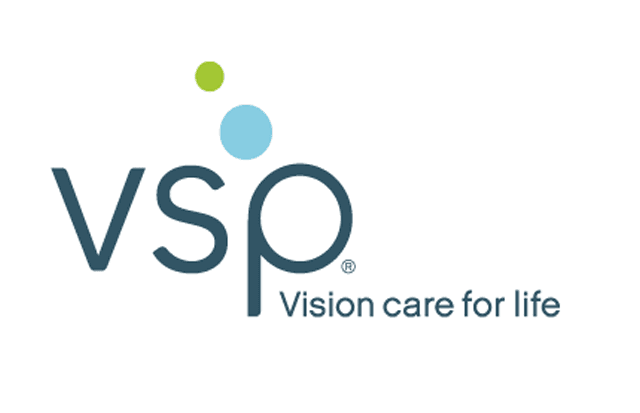
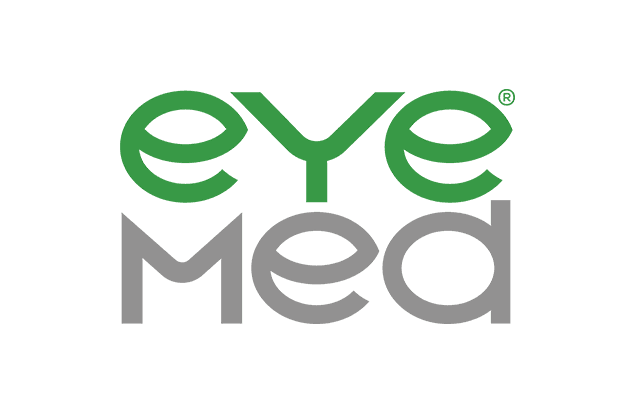

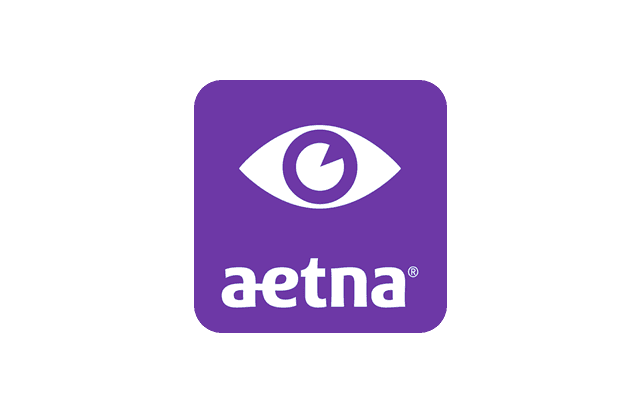











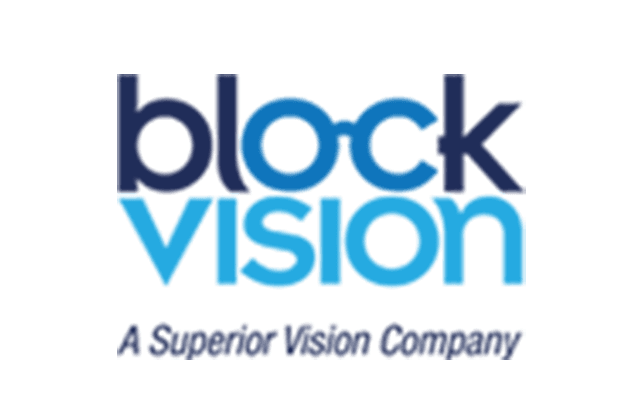















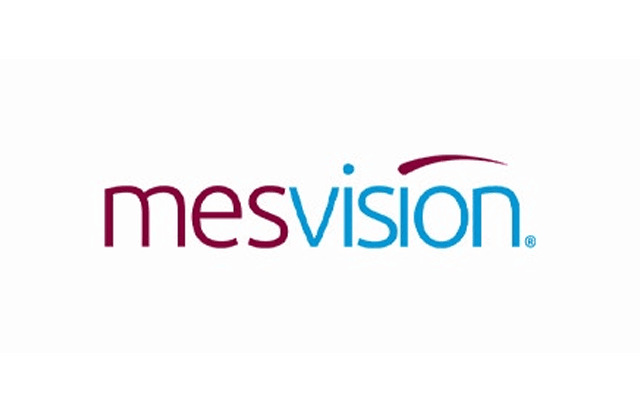









Affiliations










































